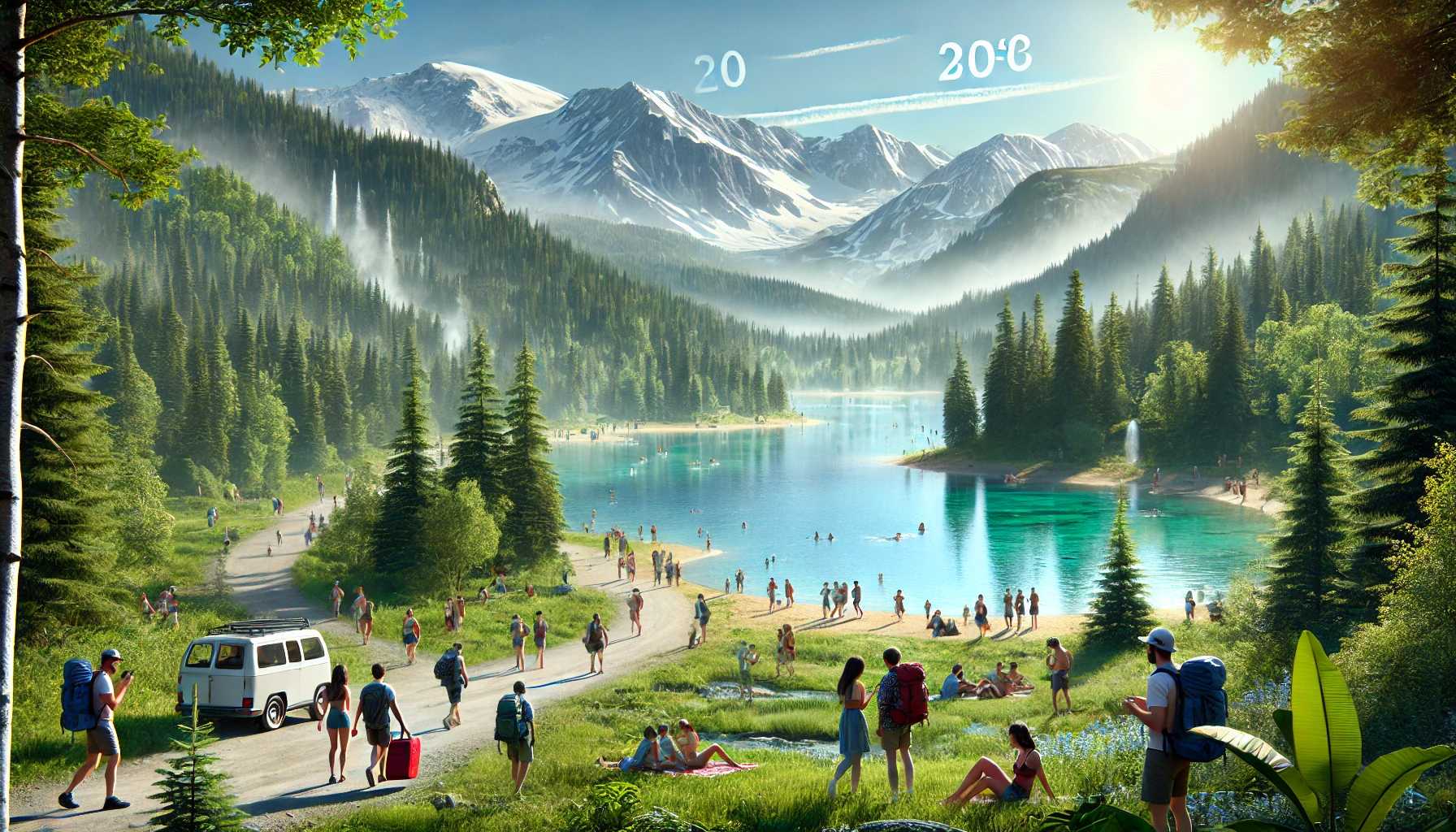
Thursday, August 15, 2024
Reading Time: 3 minutes
Rising Popularity of ‘Coolcations’ Amid Extreme Weather Conditions
As extreme weather conditions become more frequent, a growing number of travelers are opting for ‘coolcations’—vacations in cooler climates—to escape the heat. This trend has gained significant momentum in 2024, with more people seeking out destinations in northern Europe and Alaska to avoid the sweltering summer temperatures.
Kathy Pafunda, a 69-year-old retiree from Tampa, Florida, is one such traveler. After visiting Alaska, Utah, Minnesota, and Iceland in recent years, she is now planning a trip to Norway. “We like to escape during the summer months, especially when going outside feels like taking an unpleasant bath,” Pafunda said, reflecting the sentiments of many others.
This summer, wildfires and heat waves have driven even more travelers to seek out cooler destinations. The world’s hottest day on record was July 22, 2024, and scientists predict that 2024 could surpass 2023 as the hottest year ever recorded.
In response to this growing demand, travel companies are expanding their offerings in cooler regions. Norwegian Air has launched 10 new routes connecting northern Norway with various European cities. Similarly, Norwegian Cruise Line Holdings announced 13 new itineraries across Alaska, Canada, and New England for the summer of 2026. Royal Caribbean Group has also increased its capacity in Alaska this summer.
According to Patrick Scholes, an equity analyst at Truist, the impact of climate change on the travel industry is gradual but noticeable, with some companies adapting faster than others. For instance, domestic air arrivals to Alaska increased by 10% this summer, with a significant 30% rise in travelers from Dallas, Texas, where temperatures have been exceptionally high since May.
International arrivals in cooler destinations such as Norway, Ireland, and Sweden have also surged, with increases of 19%, 13%, and 11%, respectively, compared to the previous year. This shift is evident in the accommodation sector as well. Vacation rental company Airbnb reported a 15% increase in searches for summer stays in Norway, Sweden, and Alaska during the first half of 2024.
Luxury travel agency Virtuoso saw a 20% increase in bookings for Canada this summer, and Hyatt plans to double its hotel portfolio in Canada by 2026, with Toronto and Montreal experiencing heightened summer travel.
However, the rising demand for cooler destinations hasn’t diminished the appeal of warmer locations. Southern Europe remains popular, with international arrivals in June up 8% year-over-year. Sean Tipton, spokesperson for UK travel agent group ABTA, noted that while Mediterranean destinations are still in demand, the shoulder seasons of spring and autumn are becoming more attractive as travelers seek to avoid the intense summer heat.
This extended travel season is spreading tourist traffic throughout the year, which may lead to increased pressure on local infrastructure and communities. Melanie Brown, director of data insight at Key Data, mentioned that destinations like Colorado, which previously saw high traffic for only nine weeks, now experience it year-round.
However, this shift also presents challenges for travel companies, particularly in finding enough workers in a tight labor market. For example, Virtuoso reported a 17% decline in summer bookings for Greece, where high-end accommodations have been particularly affected. Greece experienced its hottest June and July on record, with wildfires forcing thousands to flee their homes.
Despite these challenges, the trend of ‘coolcations’ continues to grow as more travelers seek refuge from extreme weather in cooler destinations.
Tags: alaska, Alaska Tourism News, Dallas, Europe, norway, Norway tourism news, stockholm, Stockholm tourism news, Sweden, Sweden tourism news, Texas, Tourism, Tourism news, Travel, Travel News

